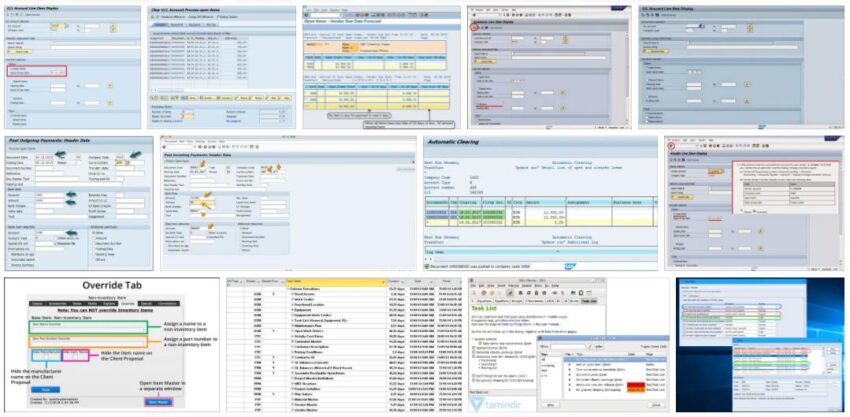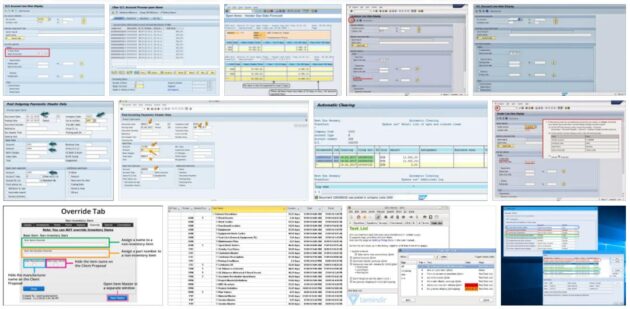No matter which company you own, you have to keep an eye on your open bills (= open items). Because the fewer unpaid bills you have, the better your liquidity is .
Definition: what are open items?
As a company, you issue invoices to your customers and wait for them to settle your claims . In addition, you will of course also receive invoices from your suppliers. They represent liabilities that you have to pay. Both variants of unpaid invoices represent the open items . They are only cleared once payment has been received.
Significance of the open items
Based on the definition above, it is clear that the better off you are financially, the more punctually your customers pay. According to percomputer, the handling of the open items has a direct impact on the liquidity of your company!
Importance of receivables and liabilities
If your customers pay on time and reliably, you always have enough money to invest, buy materials or pay taxes. Without incoming funds , you can have payment difficulties and possibly not pay your own bills. In the worst case, that means bankruptcy for you in the end .
It is also advantageous to pay supplier invoices immediately in order to possibly save money through cash discounts . Immediate compensation is also important in order to avoid late fees.
Importance of payment control
In order to guarantee your liquidity, you have to have a constant overview of your incoming and outgoing invoices . It is important that you always check all incoming payments from customers in order to be able to issue reminders in good time.
It is equally important but also that you do not payable Invoice escapes. Among other things, your reputation is at stake here. If you keep paying late, your supplier could suspect that you don’t have enough money and may even refrain from further deliveries.
In addition, as already mentioned above, you should pay as soon as possible in order to take advantage of discount deductions. And last but not least, it is important that everything is paid for so that your bookkeeping always shows you your currently available funds. Otherwise, the forgotten payments trick you into thinking that you have a lot more money than you have. Then, in turn, you can plan and spend money on purchases that you don’t actually have, and thus get into debt.
Means of payment control – the open item list (OPOS)
You can monitor your open items manually or with the help of a computer program. The best way to keep track of things is to create an Excel spreadsheet for invoice tracking. This table can also be downloaded free of charge from various platforms on the Internet.
Open item list sample
The table always needs a list with the invoice number , invoice date, customer name and amount. To do this, you have to enter the specified payment term in a column. When booking the account statements, you can see which payments have been received up to this day and enter the payments or check off the item as completed.
You need a similar list for the payments you have to make to your suppliers. However, depending on how big your company is and how many invoices you have to control, you won’t be creating your own spreadsheet. You will want to use one of the commercially available programs instead.
Handling of Open Items – Manage Open Items List
Invoicing and receipt of invoices
At the beginning of your list is the posting of incoming and outgoing invoices . As long as there are no invoices, you cannot create lists. You have little influence on the incoming invoices , they just come. But the outgoing invoices are created in your accounting department or by yourself. You can therefore include them in your open item management immediately after they have been created and sent to the customer .
Process or offset open items
By processing and entering the new invoices immediately, you can also determine if, for example, different invoices need to be offset against each other or credited. For example, if the customer has ordered new goods, but an old delivery has been returned due to a legitimate complaint. You can then offset the amounts against each other and take this into account in your list.
Variants when dealing with open items
Basically, you have two options: Open Item Management and Open Item Accounting .
With open item management , small companies can take copies of open items or invoices for resubmission and manually check daily whether the invoices have been paid by the customer. The invoices are posted directly to the profit and loss accounts without any detours via customer and vendor accounts.
The open item accounting , on the other hand, is carried out on the personal accounts . You post the respective invoices to the customer or vendor account and delete them again when they are cleared. Seen in this way, open item accounting is a by-product or sub-ledger.
Balance and coordinate open items
Regardless of the method you choose, you will need to regularly reconcile this list with the payments. Every incoming payment and every payment are to be booked, the open items must be balanced or deleted accordingly.
Don’t forget that all receipts must be filed and kept in chronological order. You will need this for tax reasons for the next 10 years . This retention period is regulated in the tax code ( §147 AO).

